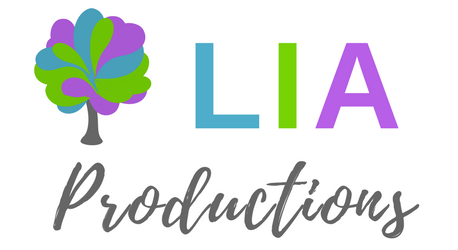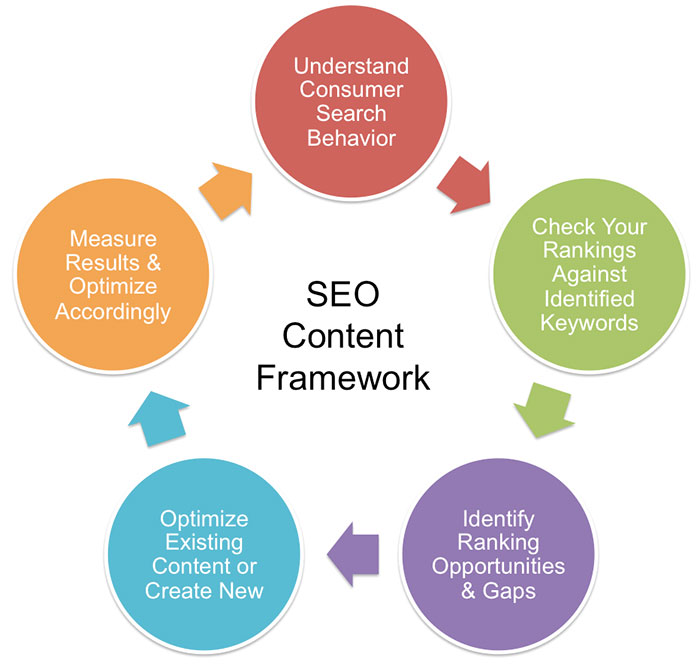5 Step Guide to Building a Strategic SEO Framework
SEO Framework, Keyword Analysis, Supporting Content and Optimizing Organic Traffic
Perpetual Traffic Formula source of reference. Best practices and effective strategies for optimizing organic traffic.
When selecting a brand name, product identity, URL, domain names, sub domains, SEO keywords, directory locations, writing supporting content and articles as part of the business plan to harvest (plant, prepare, propogate) generate and optimize ORGANIC traffic, there are a few key pointers to keep in mind:
1. Selecting the Brand Name, Product Identity and Primary Domains
1. Dead-on domains perform better in Google page ranking.
2. Localization/locale as part of sub domain perform better in Google page ranking.
3. SEO friendly URL, full text search string with primary keywords perform better in Google page ranking
4. Use of full text search string that refers to “underlying site purpose”, “user intention” or “user need” in the Page Title perform better when pages are being crawled by the Google bot/spider.
5. Use of full text search string as part of meta keywords in the page content body tags, even hidden text keywords will get picked up by the bot!
6. Scope out the competition, their link activity and their page ranking
7. Assess whether the cost of a dead-on domain offsets the Adword cost. What is the Adword value?
8. Evaluate the commercial intention level (how likely does this page drive a purchase decision from the user, i.e. conversion – subscription)
2. Extensive Keyword Analysis – SEO Framework meets Database Schema
The following extensive keyword analysis should be performed when assessing the competition, predicting keyword usage, selecting the primary keywords, and when building the SEO framework of a site, it’s directory locations and site index structure:
1. Use a spreadsheet with the following columns: #, Localized markets, Competition Level, Global Monthly Visits, Local Monthly Visits, Commercial Intent, Adwords Avg CPC, Adwords Value, Domain Cost
2. Use Cherry Picker tool to assess the link activity and ranking of domain name or keyword – competitive level.
3. Use Google Adwords, Adsense and Remarketer reporting tools to assess Adword link activity, CPC, ranking, broken out by localized markets
4. Use Keyword Commercial Intent Tool for assessing the commercial intent level.
5. Brainstorm and shortlist your proposed Keywords to ensure keyword density and getting ranked in Google. Shortlist 12 keywords, write articles for each of these keywords that longtail links will be set up for, get ranked organically using social bookmarking and effective linking strategies below.
 3. Writing Optimal Content for the 12 Keywords = 12 Articles to Support the Web Site
3. Writing Optimal Content for the 12 Keywords = 12 Articles to Support the Web Site
1. Once the 12 keywords have been selected, then write relevant, clear and concise articles that be will serve as the content landing pages to which inbound links and in-site links will point to and reference to promote organic back linking activity.
2. List and syndicate articles all over the Internet through web directories, content blogging on other related web sites, to set up the inbound linking to our site and also allow these 3rd party sites to get ranked too.
3. The structure of these articles should include the following:
– Title (Headline) that include primary keywords in title, outline a benefit to the user, make it eye-catching or even controversial, pose a question perhaps, long titles (up to 100 chars – first part for SEs with keyword, second for humans for context around keyword). Keyword Phrase with delimiter (: or -) then Benefit-Rich, Attention-Getting Title e.g. Casual Sex – 10 Tips on having Casual and Intimate Encounters
– Summary / Description used by article directories – not typically visible on your web site but mainly on the 3rd party linking sites. Needs to be compelling, maybe use first two sentences, keywords are key, opening and captivating question e.g. “Did you know Toronto is the ideal place to meet people? You will once yo read this short article on Toronto being a bustling meeting place.”
– Body use opening line that offers a “big idea”, content nugget that dangles a carrot leaving them wanting to read more – be sure to address your audience (Guys! Girls! Folks!). Start with a very short sentence, use keyword phrase in first sentence and break body into visual and formatted chunks (lists, bullets, paragraphs, numbers, sub headings, etc) – 5 sentences per paragraph max. Jakob Nielsen study proves that people scan pages in the shape of an F as they “view” or “read” through web page content. 500 – 800 words sweet spot. No hard ending, but flow into Resource Box. Important that the end of article needs to flow seamlessly into the Resource Box – no hard ending!
– Resource Box -contains other links to learn more, related links, flows seamlessly into resource box as part of the same article piece. Use a connector phrase to flow directly from article into resource box e.g. transition phrases like “to learn more, know that you understand, and now I’d like to…”, which then leads to the money page – lead generation. One absolute URL or two anchor text URLs.
4. Social Bookmarking – Reciprocal Linking (Conversation Architecture)
It is important to set up natural reciprocal linking between other related sites in order to attain increase exposure, organic traffic and ensure that content is crawl able by the Google bot, etc.
1. When seeking related sites and content and coming across a relevant blog or article, use Google Alerts, then you must social bookmark the page using Digg, Delicious, Stumble Upon, Reddit, Google Bookmarks. Always include the social bookmark icon bar in WordPress template.
2. Next you should add a comment to the blog or article that promotes your own link to your blog or articles (content pages).
3. Write your own post or blog, and include a link back to the original related site for organic reciprocal linking between sites.

5. Effective Linking to Primary Content Pages (Articles, Landing Pages)
1. Use Linkbounder for setting a diversity of backlinks to cement your position and longtail search results – start harvesting early for the most natural linking!
2. When linking to your site, the recommended split between what page types should be as follows: 50% Home page, 30% Internal pages and 20% Posts.
3. For Home page linking, use absolute URLs and naked links without anchor text. 60% of links to home page should be absolute URLs e.g. http://www.yoursite.com
4. For Internal pages and Posts, for the majority use anchor text for 3 biggest keywords on that page.
5. Linkbounder is a semi automated link building tool. Important not to overkill else you could get blacklisted as spam. Use in moderation for basic link building. Focus on posting to Web directories.
6. Repurposing Content or an Article for effective link building – Order of Distribution:
(i) Directory Submissions (ii) Article Submissions (to Ezinearticles.com) (iii) Press Releases (tweak and repurpose article as news) (iv) Convert to PDFs (new media, another link) (v) Convert into a video.(vi) Convert into podcast or MP3.
7. 300-500 links for the first month, good enough! 1000 links even better (just remember moderation is key and not over killing and being flagged as spammer)

